|
|
| The ease of reaction depends on two things: (1) the nature of the halogen (2) the classification of the alcohol The reactivity of the halide depends on the electron donating ability of the halide. The larger the halide, the farther the valence electrons are from the nucleus, and the more easily they are donated. I- is the best nucleophile. It is also the strongest of the halogen acids, and readily donates H+. | 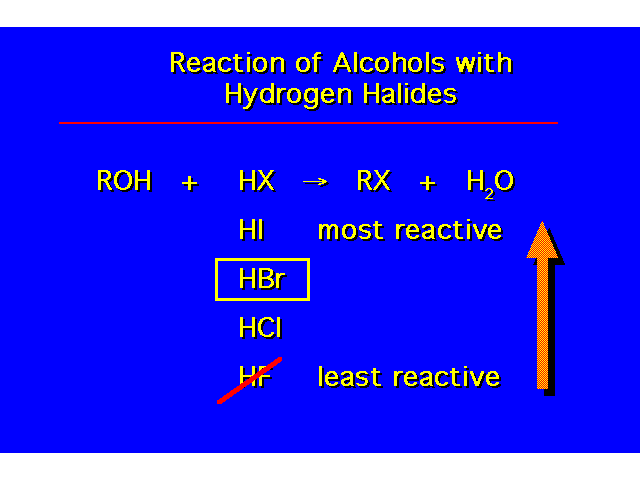 |
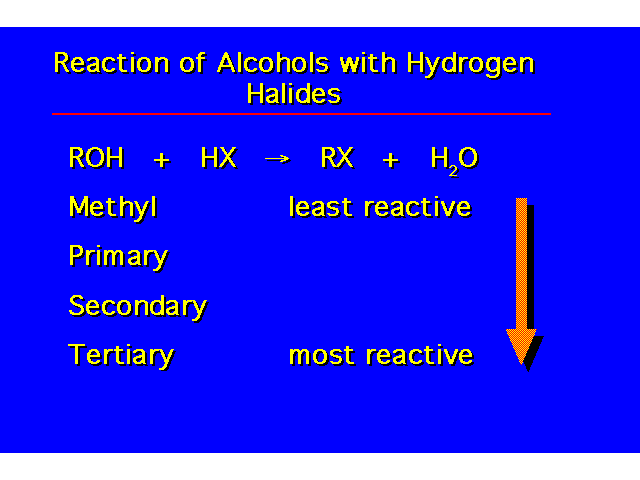 | |
| The amount of energy that is required for the reaction is indicative of the ease with which an alcohol reacts. The more easily the alcohol reacts, the lower the temperature required for the reaction. | 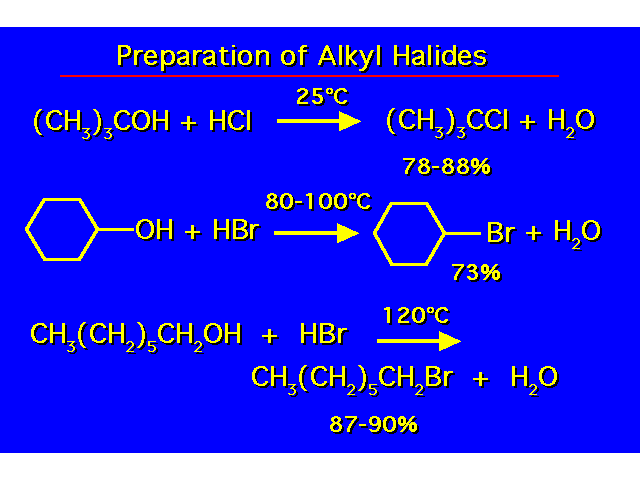 |
| In this case the HBr is generated by the reaction of the sodium bromide and sulfuric acid. | 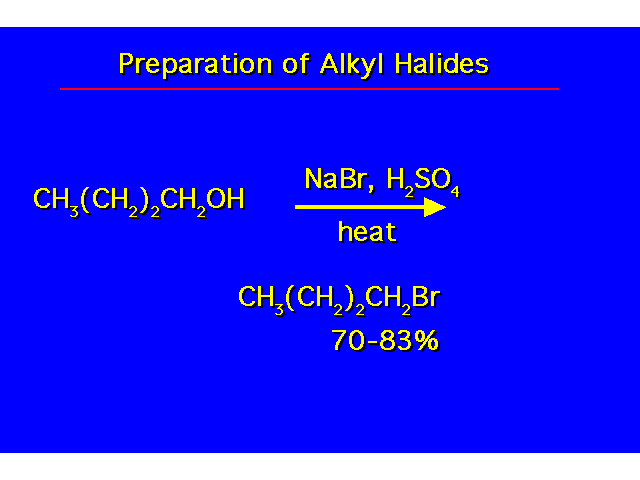 |
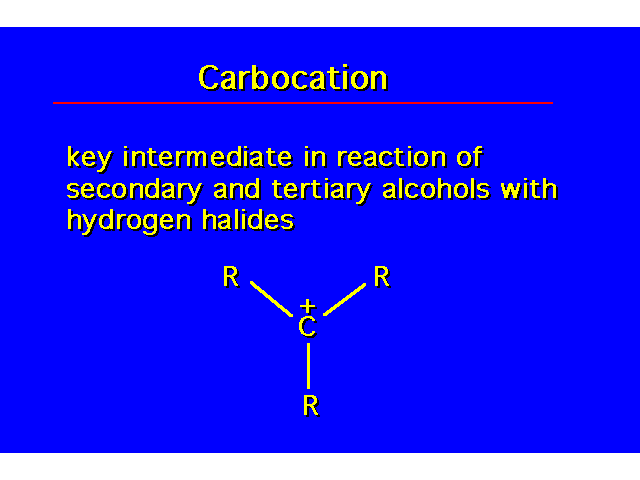 | |
| The reaction of HX with 3o alcohols is a multistep process. During this process a tertiary (3o) carbocation intermediate is generated. | 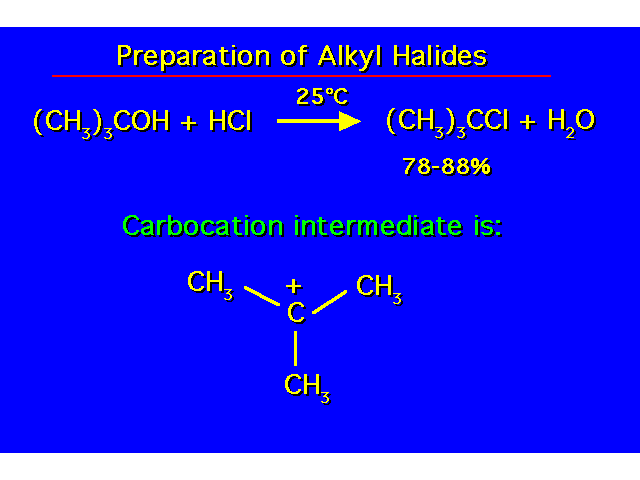 |
| A carbocation has trigonal planar geometry. It is electron deficient and is an electron-seeking species. The carbocation is an electrophile and a Lewis acid. An electron pair can attack the cationic center from either face. | 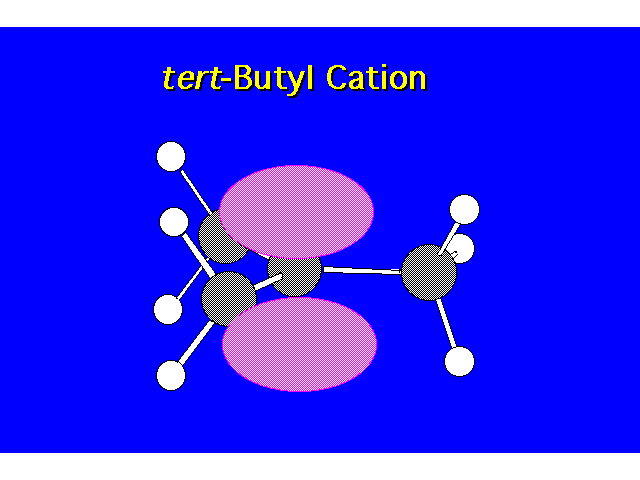 |
Step 1:This step is analogous to the process that occurs when HX dissolves in water.The alcohol is a nucleophile (Lewis base) which attacks the partially positive hydrogen of the HCl molecule. The energy profile for this step is identical to that for the dissolution of HX. NOTE: The protonated alcohol now contains a unit that looks like a water molecule. This is a bimolecular step (requires two reactant molecules) and occurs rapidly. | 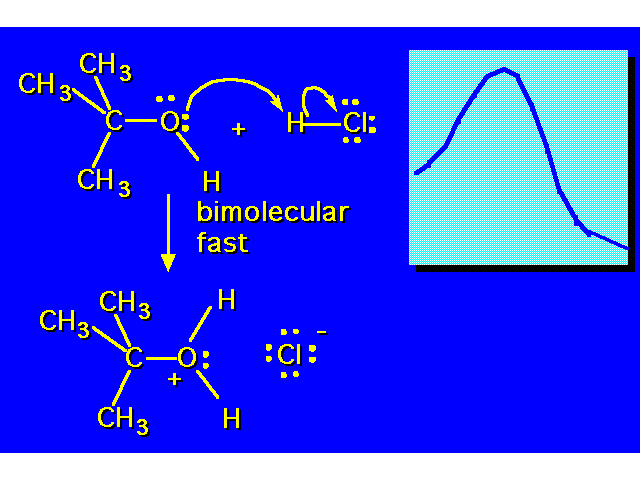 |
Step 2:Breaking the bond between the carbon and the oxygen allows the oxygen to regain a second full pair of electrons, removes the formal charge on the oxygen and generates a stable molecule, water.This step only involves one reactant molecule so is called a unimolecular step. Since this step has a larger energy of activation than Step 1, it occurs more slowly. | 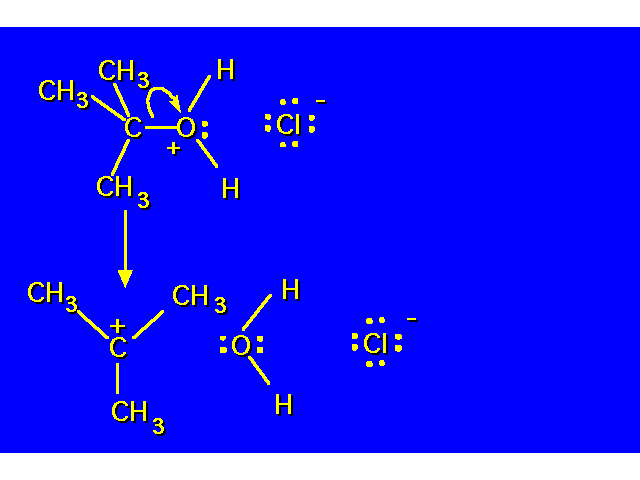 |
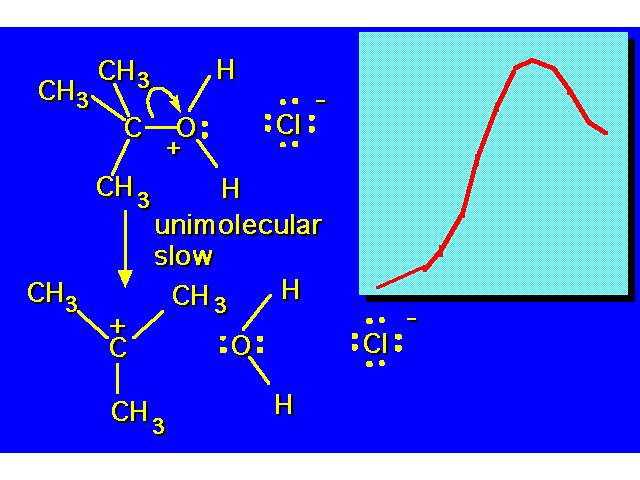 | |
Step 3:Carbon is more stable when it has a covalence number of 4, so the carbocation will seek out electrons.The chloride ion serves as a nucleophile, donating a pair of electrons to form the C-X bond. The activation energy for this process is small so it will proceed more rapidly than Step 2. Since Step 2 is the slowest step (the bottleneck), it is called the rate determining step (rds). In a multistep process, the overall process can occur only as fast as the slowest step occurs. The slowest step determines the reaction rate. | 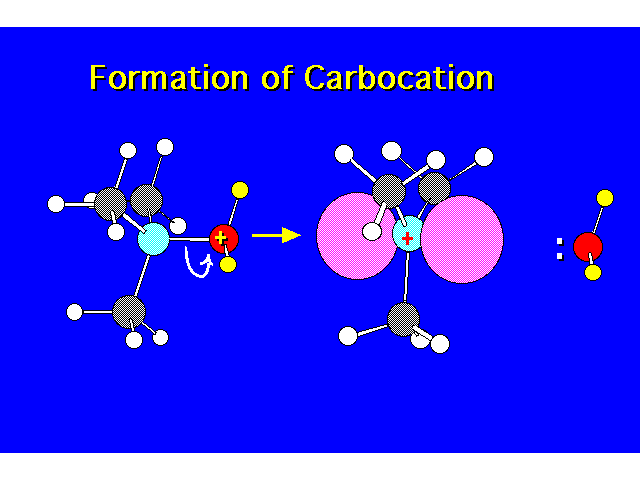 |
 | |
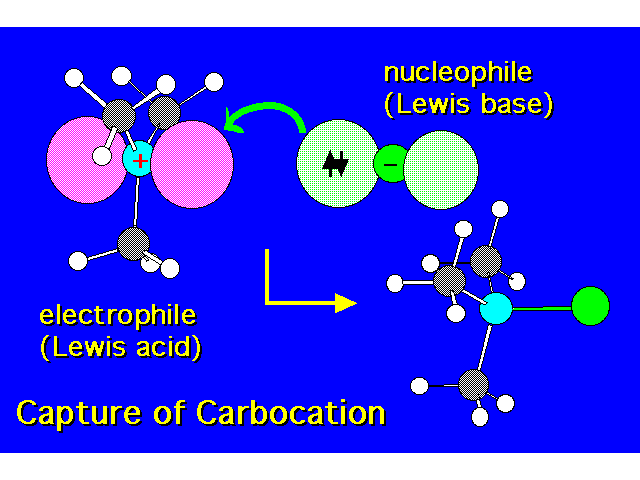 | |
| Carbocations have stabilities that are related to their classification. Alkyl groups are electron releasing so they help to stabilize adjacent positive charges. The greater the number of alkyl groups present on the electron deficient carbocation center, the more stable the carbocation. | 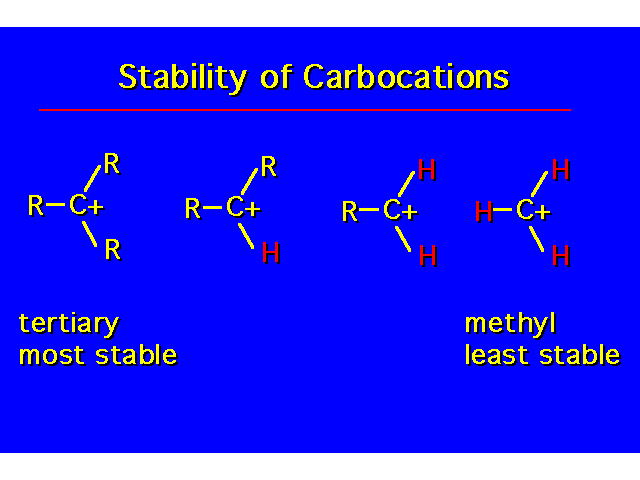 |
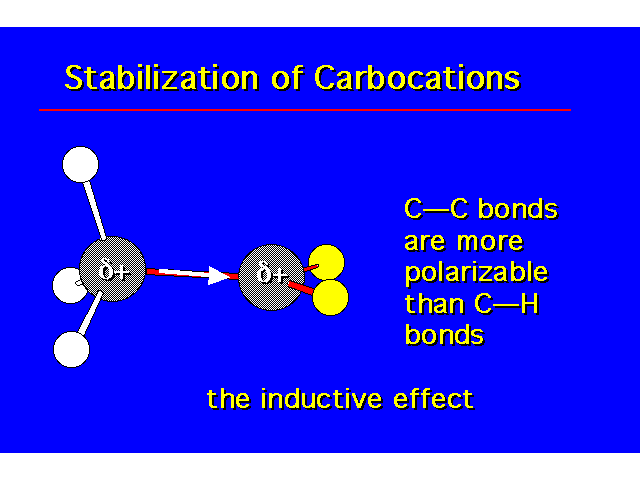 | |
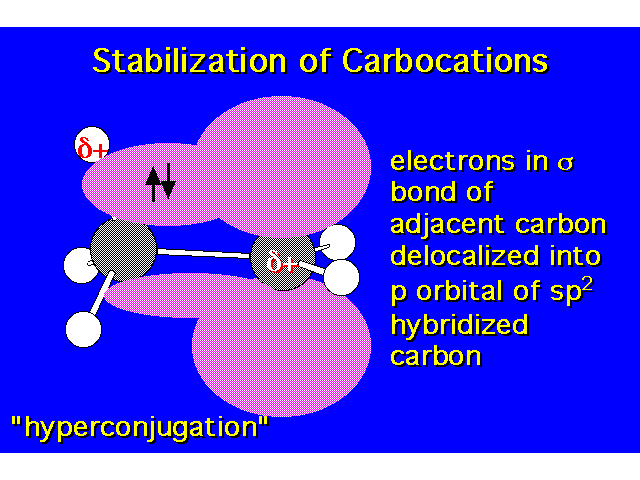 | |
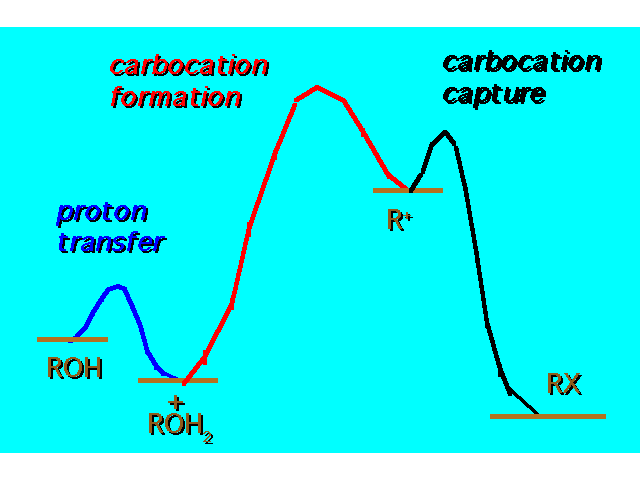 | |
| Since the slowest step involves only one reactant, the overall rate of the raction will be dependent only on the concentration of this reactant. The rate of this reaction is dependent only on the concentration of alcohol. The rate of this reaction is independent of the amount of halide ion since it is not involved in the rds. | 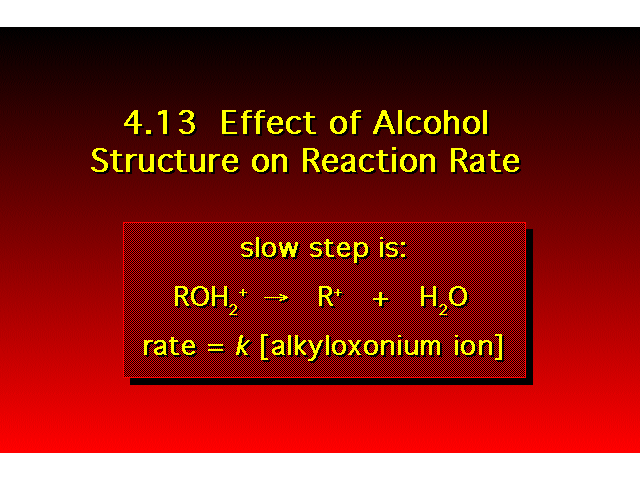 |
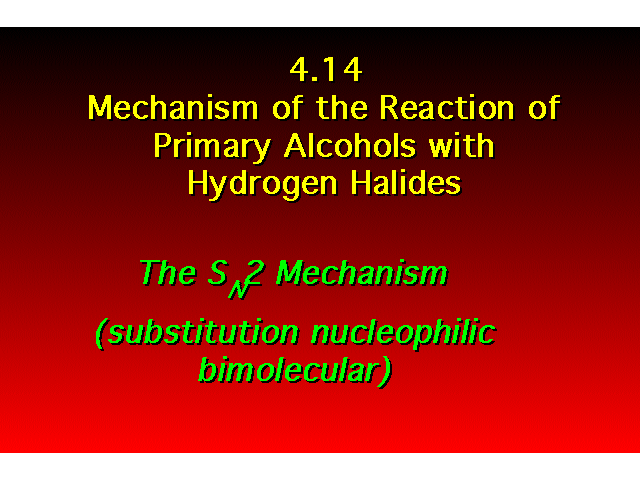 | |
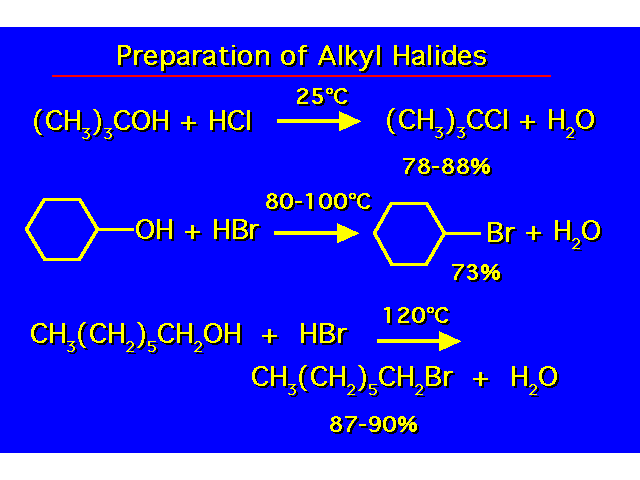 | |
 | |
| The rate determining step involves two molecules so the overall rate of reaction depends on the concentration of both species. | 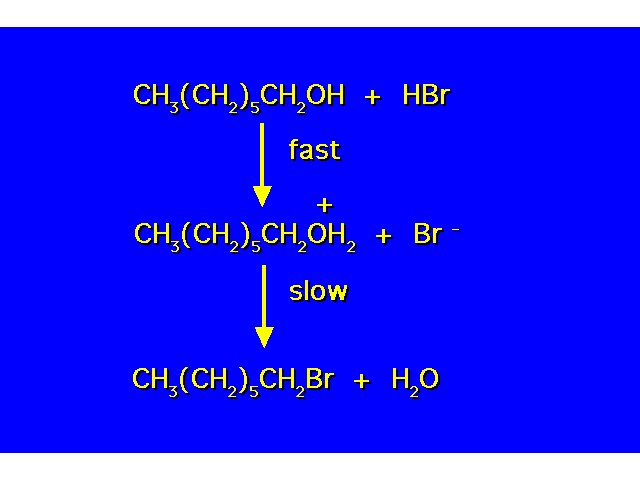 |
| In this step the carbon-halogen bond is formed simultaneously with the breaking of the carbon-oxygen bond. No carbocation intermediate is formed in the reaction of primary alcohols and HX. |  |
| Note: The halide entered on the side opposite where the water molecule left. | 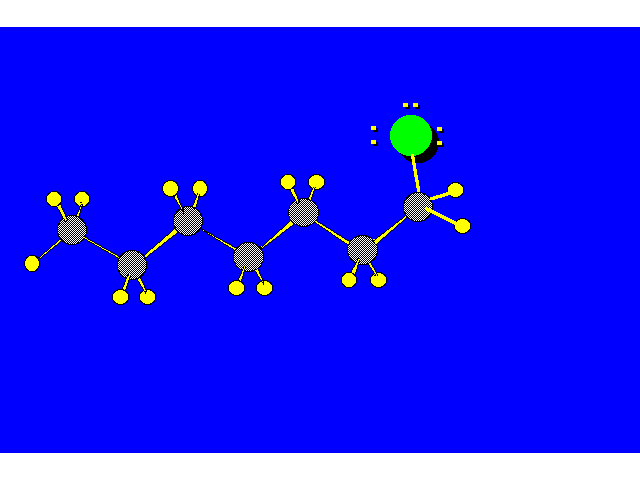 |
 | |
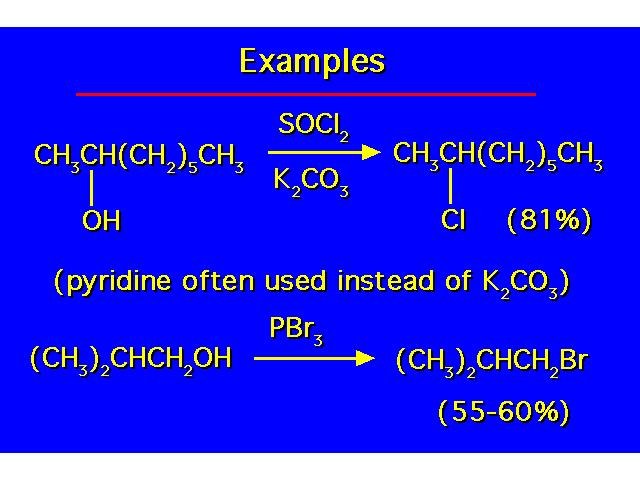 | |
